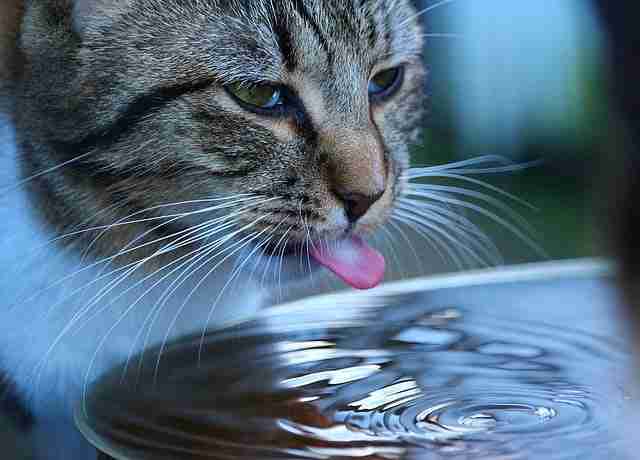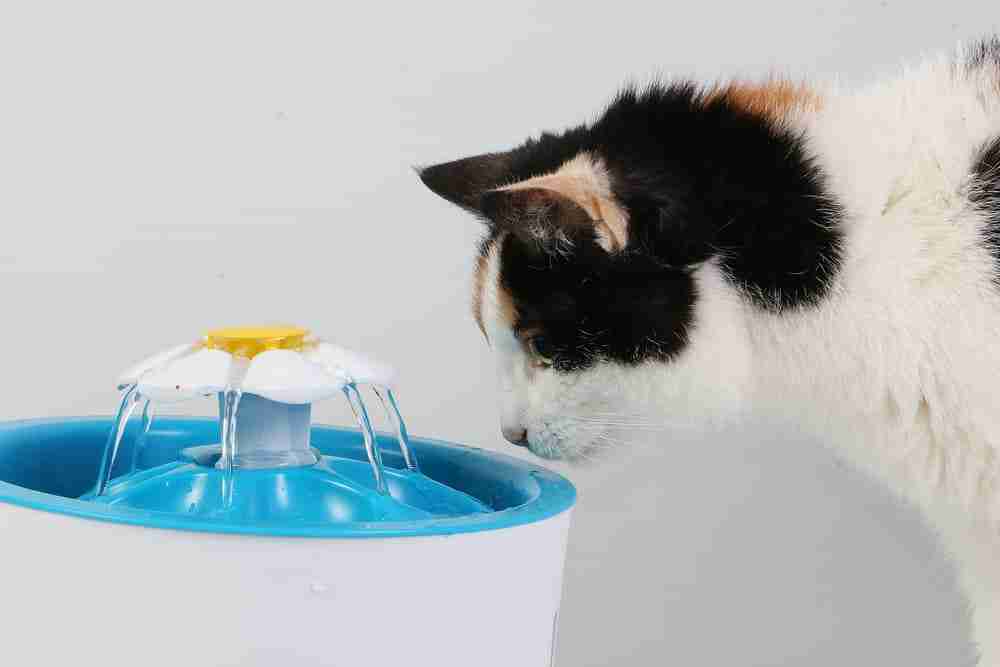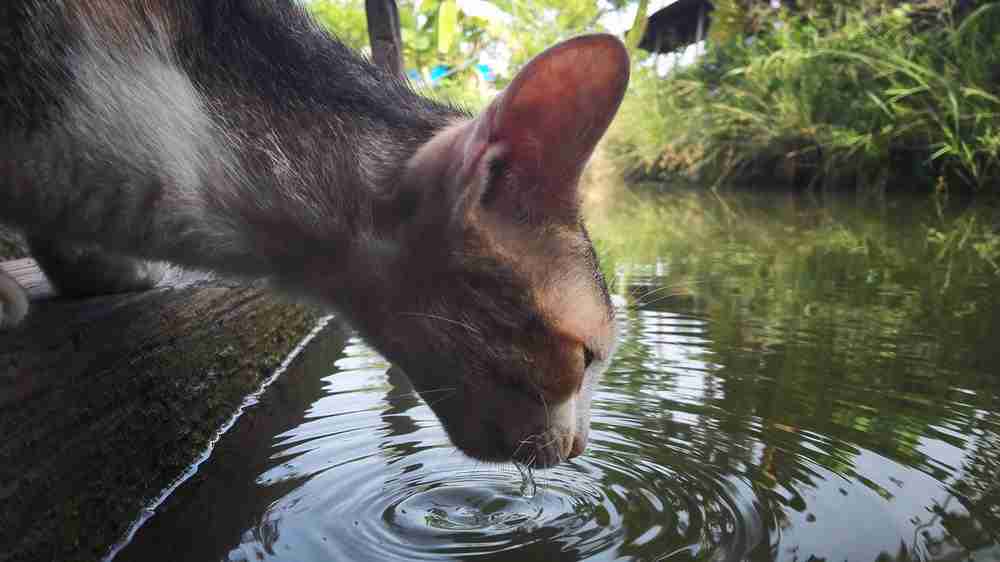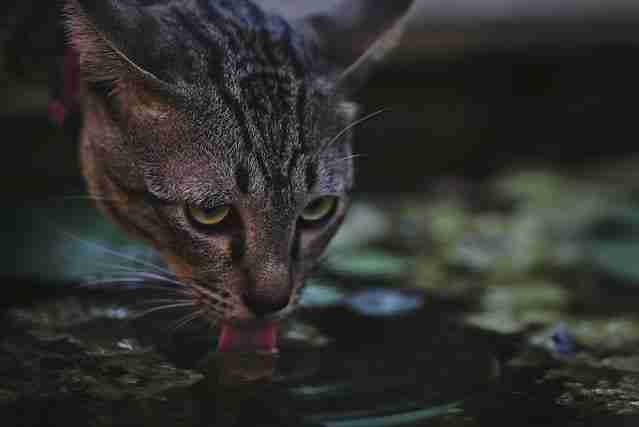The truth is that medical studies identifying how long a cat can go without water before it dies from thirst are non-existent. Simply put, it is morally wrong to run an experiment where you kill a bunch of cats by depriving them of water just to see how long it takes!
In humans, we know from misfortune how long we can survive without water before dying from thirst. Plenty of unlucky desert travelers have run short of water and left harrowing memoirs of their last days before their diaries end four days after their water dries up.
Most of our insight regarding cats’ ability to go without water is anecdotal. From the cat that got trapped in the cellar to the cat that got locked in by accident, in such cases it is thought that three days is the most a cat can go without water.
Dangers Of Dehydration

What we do know is that dehydration is the real danger and can kick in within 24 hours. There are plenty of real-world examples of cats suffering severe dehydration and sustaining permanent organ damage as a result within 24 – 48 hours. For many cats, a loss of 20% of their body weight from dehydration is the extreme limit before organ damage occurs (1).
On the whole, your average cat with free access to water and eating a wet diet is unlikely to suffer this type of extreme dehydration. Even a cat on a dry diet with access to water is unlikely to get a case of dehydration.
Other than trapped cats, it is sick and/or elderly cats that may suffer from dehydration. Sick cats that are vomiting and/or suffering from diarrhea can quickly become dangerously dehydrated losing vital electrolytes and water in hours. For these cats, veterinary attention is vital. They may quickly need IV fluids and medications to inhibit diarrhea or vomiting to avoid their situation spiraling.
Elderly cats that may have underlying health conditions that arise with age such as hyperthyroidism or kidney damage can be prone to dehydration. They need monitoring and feeding correctly with good access to water to keep them in good shape. If you identify them as being dehydrated then a visit to the vet is in order.
How Do I Identify Dehydration In My Cat?
The most common way to test for dehydration in your cat is to test for “skin tenting”. Essentially you test by pinching the skin between the shoulder blades of your cat. The skin should snap back into position, in which case everything is fine. If the skin doesn’t snap back, if the skin remains “tented” after your pitch then your cat is quite badly dehydrated and you should get the cat checked out with a vet as soon as possible. You need to get to the bottom of the cause of dehydration and rehydrate your cat safely.
Skin tenting is not the only symptom of dehydration. If you are unsure you can cross-check your results by checking your cat for dry gums, panting and general lethargy. If you are seeing these signs, chances are your cat is dehydrated.
Other signs of concern that sometimes accompany dehydration include lack of appetite, sunken eyes, diarrhea, vomiting or excessive urination. Your cat may be dehydrated without exhibiting these symptoms but if these symptoms are present you can be sure your cat is dehydrated and needs medical care.
Cases of moderate and extreme dehydration will usually require hospitalization of your pet whilst your cat is rehydrated by IV fluids and the cause of the dehydration identified and treated.
What Can I Do To Boost My Cats Water Intake?

Sometimes we just don’t see our cats drinking much, a cat looking at water but not drinking is a common complaint. Often they may be drinking outdoors or they may be absorbing all the water they need from their food so we just don’t see them visit the water bowl often. If you are concerned that your cat might not be getting enough water then here are a few tips you can implement to increase your cat’s water intake :
Put your cat on a wet food diet
Most canned wet foods are 70 – 80% water. Putting your cat on a wet food diet can dramatically improve their water intake. A single 5oz can of wet cat food can contain over half your cats daily water requirement. If your cat is on a dry food diet think about switching to wet food to ensure water intake is optimal or at the least consider adding water to dry cat food.
Try A Water Fountain
Most cats simply don’t enjoy drinking from standing water sources. From a wild perspective, standing water is dangerous and is likely to be polluted. Water that moves is less likely to harbor bacterial contaminants. Cats are hardwired to be cautious about drinking from standing water – a water fountain could help you get kitty drinking more. Check out the best cat water fountains here.

Move water away from eating areas.
As well as standing water, cats don’t like to drink from water sources close to eating areas. Again this harks back to evolutionary learning – cats have learned that water in eating areas is often polluted by the “kill”. Rotting carcasses create bacterial pollution that makes the water dangerous to drink. For us humans, it seems quite normal to have food and drink together but for your cat, they might find the experience strangely off-putting.
Use Multiple Water Bowls
Sometimes a cat may feel uneasy about drinking in an area you have set down a bowl. The area may have restricted eye lines or overhanging worktops or other negative aspects from a predator’s point of view. Try placing multiple bowls around to pique curiosity and provide multiple opportunities in case some areas are off-putting.
Use a small water bowl.
This study found that cats with smaller water bowls drank more from the bowls and appeared more willing to use the bowls. The theory is that a bowl of less than 15cms diameter is easier for a cat to use as whiskers can be effectively be brought into play to judge distance from the sides and surface of the water.
Try Filtered Water Or Rainwater

Often tap water and bottled water will have been cleaned by chemicals and may have residual chemical smells and tastes that a cat might find off-putting. It may be worth trying to use a simple water filter jug to strip chlorine out of tap water to try to make the water more palatable to your cat. My cat often drinks from puddles and captured rainwater – presumably because it tastes more natural. See if collecting, filtering and putting down rainwater can entice your cat to drink more
Clean water bowls regularly.
Give your water bowls a good scrub on a regular basis. If you leave water standing for hours it can attract more than just your cat and slime, algae and other environmental pollutants can find their way into the bowl and affect the water. A regular clean can help reduce nasty build-ups that may leave water tasting or smell bad.
You can check out how long a cat can go without eating here…
photos : http://www.learningvideo.com/ https://www.flickr.com/photos/toastal/39537957644
